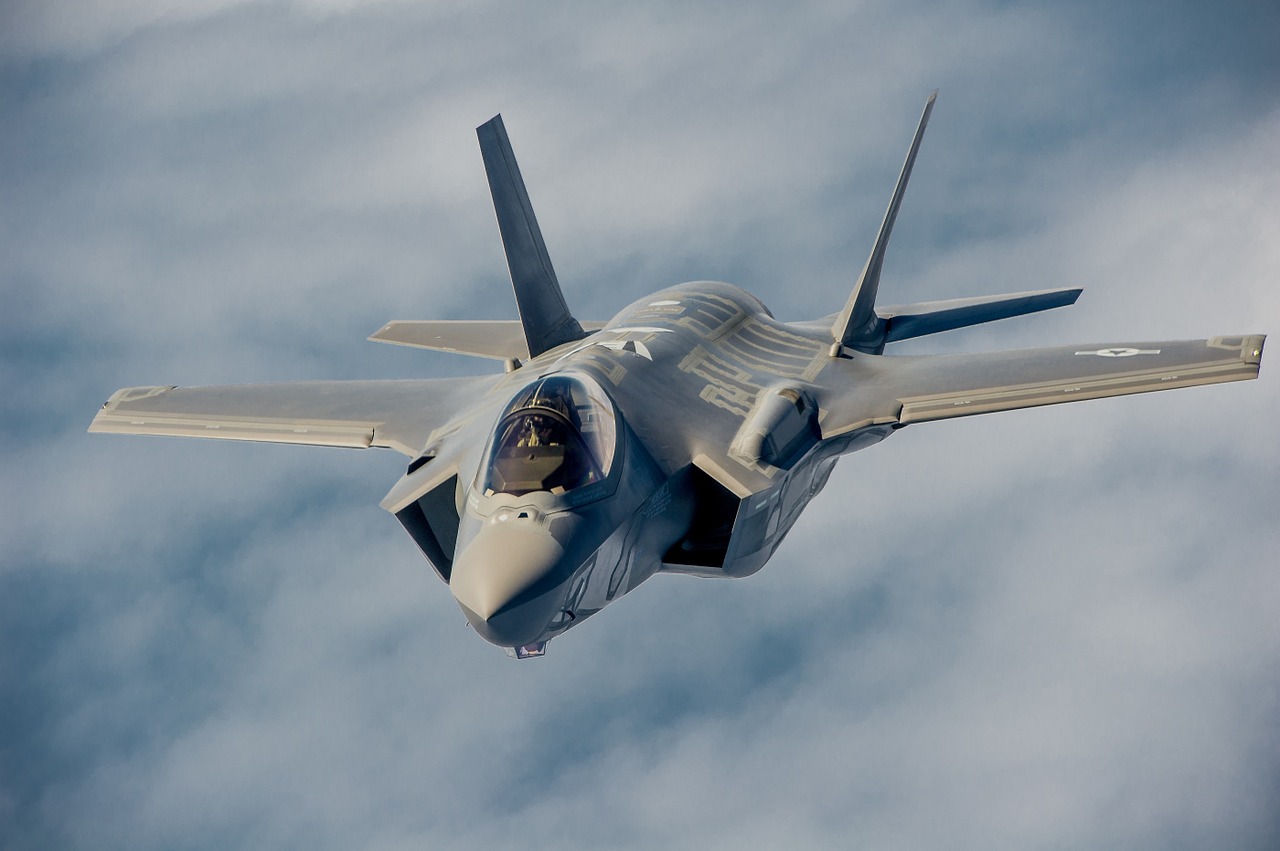The F-35 fighter jet is a single-seat, single-engine, stealth, multi-role all-weather aircraft. It can be used as strike missions and air superiority fighter jet. It is a deadly, network-centric and survivable aircraft, which gives pilots the core advantage against any kind of adversary.
The F-35 fighter aircraft which is also known as F-35 lightning-ll is manufactured by Lockheed Martin, the American Firm. In 2001, Lockheed Martin and Boeing presented the next-generation fighter jet models in the Joint Strike Fighter (JSF) program, which include Lockheed Martin X-35 and Boeing X-32 fighter aircraft models. Lockheed Martin X-35 beat the Boeing X-32 and won the Joint Strike Fighter (JSF) program. There are a total of 3000+ jets planned in the program. The F-35 fighter aircraft takes its first flight in December 2006.
Su-35 Flanker-E the supermaneuverable multi-role Fighter jet
F-35 fighter jet program cost:
The funding for the Joint Strike Fighter (JSF) program came from NATO countries and 13 American allies countries which include the United Kingdom, Italy, Norway, Australia, Canada, Denmark, Netherland, and Turkey. In 2012 Pentagon estimated the lifetime cost of the program at more than $1.5 trillion over 50 years, making it the most expensive fighter jet program in US history. F-35 came in 3 variants A, B, and C.The unit cost of F-35A is $77.9 million (lot 14), while F-35B is $101.3 million (lot 14) and F-35C is $94.4 million (lot 14).
Why is the F-35 so expensive?
There are 555+ fighter jets manufactured and delivered so far, with collective flight hours of about 317,000. The F-35 is operating from 26 air bases around the world with 1145+ pilots and 9535+ maintainers. Stats presented by Lockheed Martin.
F-35 fighter jet design focuses on low observables, next-generation avionics, and sensor fusion that enables a high level of situational awareness and long-range lethality. The United States Air Force (USAF) considers the F-35 a primary strike fighter for conducting the suppression of enemy air defenses (SEAD) missions. The F-35 came in three variants as described earlier, F-35A, F-35B, and F-35C. F-35A has conventional take-off and landing (CTOL) capabilities. The F-35B has short take-off and vertical landing (STOVL) capabilities. F-35C is a carrier-based variant (CV). F-35 aircrafts variants have similar performance characteristics, but they are mainly differentiated by their different basing requirements. Like F-35A operated by the USAF on conventional runways, while F-35B designed to be operated from austere, short field bases and a range of air capable ships operating near front-line combat zones. It can also be operated on conventional runways. And the F-35C carrier variant (CV) is the navy’s first stealth fighter and the world’s only 5th-generation fighter jet that is designed and built exclusively for aircraft carrier operation.
Iranian Hackers target US Military Officials with google account hacks
F-35 fighter jet weapon systems:
F-35 sensors include, AN/APG-81 Active Electronically Scanned Array (AESA) radar, AN/ASQ-242 communications, navigation, and identification suit manufactured by Northrop Grumman, AN/ASQ-239 Barracuda Electronic Warfare System developed by BAE Systems, AN/AAQ-37 Distributed Aperture System (DAS) jointly produced by Northrop Grumman and Raytheon and AN/AAQ-40 Electro-Optical Targeting System (EOTS) by Lockheed Martin. Most of its software is written in C and C++ programming languages while Ada83 code was also used from the F-22 fighter jet. The Block 3F software has 8.6 million lines of complex code. Operating System running in F-35 is Green Hill Software Integrity DO-178B runs on Integrated Core Processors (ICP). Data networking includes the IEEE 1394b and Fiber Channel busses.
The F-35’s Radar Cross Section (RCS) is reduced through careful shaping of air-frame and Radar Absorbent Material (RAM). The radar cross-section of the F-35 is characterized as lower than a metal golf ball at certain frequencies and angles. The airframe of the F-35 is carefully designed to reduce infrared and visual signatures as well as strict control of radiofrequency emitters to prevent their emission. The design of the fighter jet is focused on high-frequency X-band wavelengths. Low-frequency radars can detect F-35 jets but they lack precision.
Glass cockpit of F-35, designed to give the pilot excellent situational awareness. The display includes the main 20-by-8 inch panoramic touch screen along with a stand-by small display below the main display. The cockpit also has a speech recognition system developed by Adacel. The vision system international Helmet Mounted Display (HMD) is the key part of the F-35’s human-machine interface. Instead of a head-up-display mounted on the top of the dashboard, Helmet Mounted Display System (HMDS) puts flight and combat information on the helmet visor, allowing the pilot to see in any direction, no matter which way the pilot is facing. Infrared and night-vision imagery from the Distributed Aperture System can be displayed directly on the Helmet Mounted Display System (HMDS).
Rafale is no way near stealth fighter J-20, Chinese and Indian Military experts opinions
The F-35 has two internal weapons bays with four weapon stations. The two outboard weapon stations can carry ordnance up to 1100kg for F-35A and F-35C and 680 kg for F-35B. While two inboard weapon stations carry air-to-air missiles. Weapon types include air-to-surface Joint Direct Attack Munition (JDAM), Joint Stand-Off Weapons (JSOW), and cluster munition carried by outboard stations. It can also carry Small Diameter Bombs SDB and SDB-ll and spear-lll anti-tank missiles. The inboard station can carry Aim-120 AMRAAM. Fighter jet can use six external weapon stations for missions that do not require stealth. Currently, Lockheed Martin is developing a weapon rack called side-kick that would enable the internal outboard station to carry two Aim-120s, thus increasing the internal payload from 4 to 6 air-to-air missiles, offered for the block-4 version of the F-35.
F-35 Variants:
The F-35 fighter jet’s all three variants A, B, and C are powered by Prat & Whitney’s (P&W) F135 low bypass augmented turbofan engine with a rated thrust of more than 40,000 lbs. It is the upgraded version of the Pratt & Whitney F119 engine, used by F-22 fighter aircraft. The Pratt & Whitney’s F135 engine is the world’s most advanced fighter jet engine which features best-in-class single-engine reliability, fifth-generation stealth capabilities as well as advanced prognostics and health management systems.
In 2016, the Adaptive Engine Transition Program (AETP) was launched to develop and test adaptive cycle engines with one major potential application being the re-engining of the F-35. Both companies GE and P&W were awarded contracts to develop engines that will generate power of 45000 lbs. In 2017 P&W announced the growth option 1.0 and 2.0 for F135 class engines. The new model offers 6-10% thrust improvements and 5-6% fuel burn reduction.
The F-35 is supported by a computerized maintenance management system named Autonomic Logistic Information System (ALIS). Due to some problems in the current maintenance system officials plan to replace ALIS with a cloud-based Operational Data Integrated Network (ODIN) by 2022.
In July-2015, the F-35B’s entered service with the US Marine corps, while F-35A’s entered in service with US Air Force in August 2016 and F-35C’s with US Navy in February 2019. The F-35 was first used in combat by the Israeli Air Force (IDF) in 2018. The USA plans to buy 2456 F-35’s through 2044. The F-35 fighter jet is planned to be operated until 2070.
Analysis:
The F-35 fighter jet is over-all an excellent, next-generation aircraft. It has excellent stealth capabilities, provides a base for the 6th-generation fighter jet, and can counter any threat in advance in any hostile environment. It is the first-ever aircraft built that can be called a true 5th-generation, stealth capable fighter jet.
Sources:
- Official Website Lockheed Martin
- Article in Wikipedia
- Info released in PrattWhitney official website


